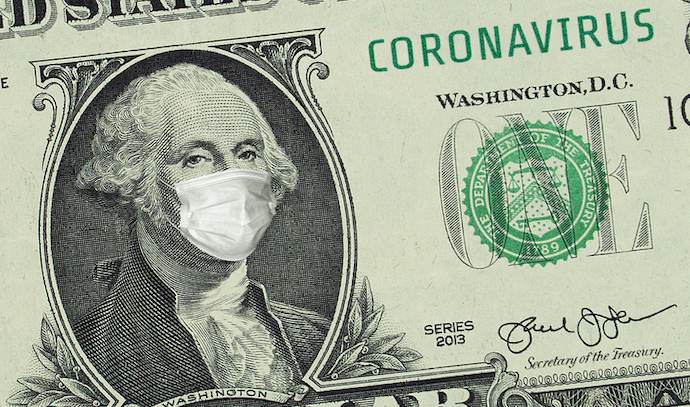2022 Marketplace Rate Filings Show Few Pandemic-Related Increases
A collection of marketplace rate filings for 2022 showed that most payers do not expect the coronavirus pandemic to have an upward impact on premiums.

Source: Getty Images
- Based on 75 individual marketplace rate filings, the coronavirus pandemic is not expected to meaningfully affect healthcare spending in 2022, a Peterson-Kaiser Family Foundation (KFF) Health System Tracker brief explained.
In 2020, payers were divided on whether the pandemic would increase or decrease their 2021 premium rates due to the unpredictable nature of the coronavirus. With slightly more knowledge about testing, treatment, the vaccine, and the virus itself, payers were more uniform about the effects COVID-19 may have on 2022 rates.
The brief looked at the rate filings in 13 states and the District of Columbia for payers on the individual health insurance marketplace. The rate filings, while not representative of all payers, gave researchers an idea of how healthcare spending will change in 2022.
The majority of the initial rate filings suggested that healthcare use will return to pre-pandemic levels and COVID-19 will not impact healthcare spending in 2022.
Just over one in four payers predicted that COVID-19 will have an upward effect on their costs, according to the brief. But these 13 payers that spanned across five different states only expected an increase of less than one percent.
The states’ ranges of how COVID-19 may affect premium rates were relatively small. Vermont reported the smallest range with a predicted 0 to 0.3 percent increase due to the pandemic. Connecticut’s expected range was slightly higher at 0.2 to 1.9 percent.
“Among the 13 plans that specified cost increases due to COVID, reasons included costs related to ongoing COVID-19 testing, treatment, and vaccinations (8 insurer filings), and anticipated vaccination boosters (7 insurer filings),” stated the brief.
It is important to note that the rate filings were submitted before the FDA and CDC announced that booster vaccines were not yet necessary for people who are fully vaccinated. This new information may have a downward effect on the already minimal predictions.
Three health plans reported that COVID-19 would have a downward effect on their 2022 premium rates, while 37 plans reported it would not affect their rates at all.
In terms of overall healthcare spending changes in 2022, the highest expected increase among the 13 states was up to 34.4 percent in New York, in which 11 plans provided data. Ranges in seven states included possible downward trends.
Payers pointed out aspects other than COVID-19 that influenced their 2022 rate filings, such as telehealth, the No Surprises Act, and the subsidies under the American Rescue Plan Act.
Several plans mentioned their intent to continue covering telehealth use but not many plans expected it to have an upward or downward effect on their premium rates for next year.
The No Surprises Act, which will eliminate surprise billing from out-of-network visits, could decrease private health plan premiums by 0.5 to 1 percent, the Congressional Budget Office estimated. But the impact on these individual marketplace plans may not be the same for all health plans.
Out-of-network service costs may decrease under the No Surprises Act but covered care costs might increase due to the lack of coverage for some services under the Act, the brief noted.
Some payers indicated that the American Rescue Plan Act subsidies may cause a decrease in premiums by less than 5 percent. The subsidies, which have lowered premiums on the federal marketplace, may also lead to increased enrollment in marketplace plans and in turn improve the overall health of enrollees, some payers predicted.
The coronavirus pandemic threw a wrench in payers’ rate filing plans in 2020. In response, experts from Manatt Health and the Robert Wood Johnson Foundation suggested reinsurance programs, risk corridors, and total transparency to address the uncertainty of the pandemic and how it would impact healthcare costs.
When trying to establish 2021 rate filings, payers encountered several problems that stemmed from the unpredictable and unknown nature of the virus. Special enrollment periods and risk pool health factors—for instance, not knowing the long-term effects of COVID-19—made it difficult for payers to file their 2021 premium rates.
After more than a year of the pandemic, payers have gotten a better handle on the coronavirus and how it will impact 2022 premium rates. Payers may still face more challenges with new variants of the virus present and the country seemingly having already hit its peak vaccination rate. But as it stands, payers reported that the COVID-19 pandemic will not have a significant impact on 2022 healthcare spending.
